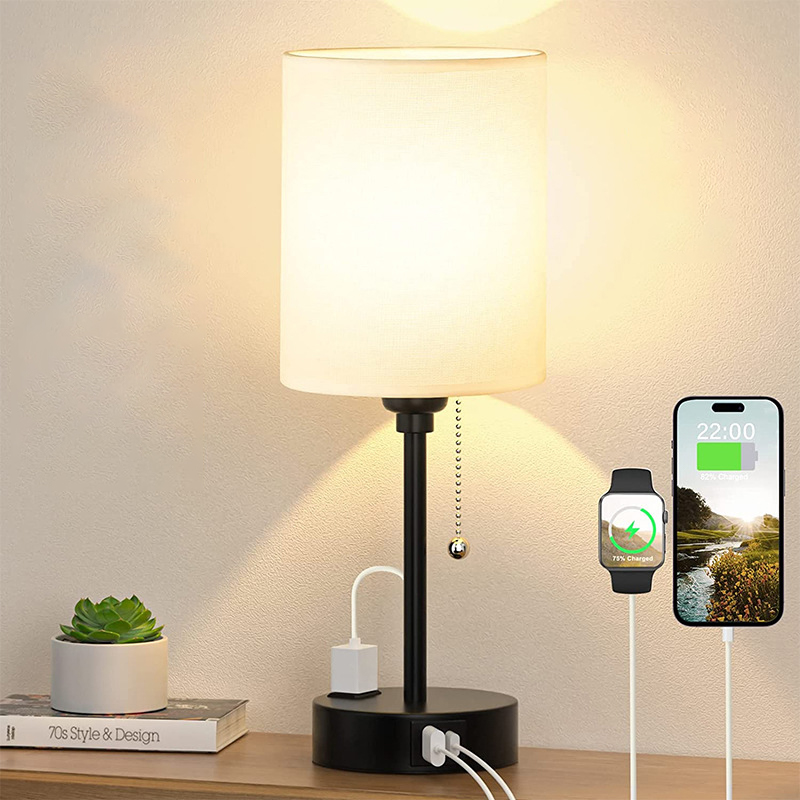In today’s digital age, table lamps continue to evolve to meet the needs of modern consumers. With the integration of USB ports and power sockets, these lights are no longer just a light source; They have become versatile devices for our technical needs. However, it is important to understand the circuit principles and safety precautions associated with these advanced desk lamps. In this blog, we’ll take a closer look at the inner workings of desk lamps with USB ports and power sockets, and explore the key safety considerations users should be aware of.
Desk lamp circuit principle with USB port and power outlet
Desk lamps with USB ports and power outlet are designed to provide lighting and convenient power for electronic devices. The circuit principle behind these lights involves the integration of electrical components to enable safe and efficient power transmission. The USB port and power outlet connect to the light’s internal circuitry, which includes a transformer, rectifier, and voltage regulator.
USB ports are typically powered by a built-in transformer that converts the lamp’s standard voltage to the 5V required for USB charging. The transformer ensures stable and safe power supply to the USB port to charge a variety of devices such as smartphones, tablets, and other USB-powered gadgets.
Likewise, the power outlet integrated into the desk lamp is connected to the desk lamp’s internal circuitry, which includes safety features such as overload protection and surge suppression. This ensures that the electrical outlet can safely power devices such as laptops, printers, and other electronic devices without electrical hazards.
Safety precautions for desk lamps with USB ports and power sockets
Always prioritize safety when using desk lamps with USB ports and electrical outlets to prevent electrical accidents and damage to electronic equipment. Here are some key safety considerations to keep in mind:
1. Overload protection: Desk lamps with integrated power sockets should be equipped with overload protection to prevent excessive current from causing overheating and potential fire hazards. Users should avoid connecting multiple high-power devices to electrical outlets at the same time to avoid overloading the circuit.
2. Surge Suppression: Integrated power outlets should also feature surge suppression to protect connected devices from voltage spikes and transient surges. This is especially important in areas prone to electrical surges, as surge suppression helps protect electronic equipment from damage.
3. Grounding: Proper grounding is essential for the safe operation of desk lamps with power soutlet. Users should ensure that the electrical outlet is connected to a grounded power source to minimize the risk of electric shock and damage to the equipment.
4. Heat dissipation: The internal circuit of the desk lamp, including the transformer and voltage regulator, should be designed with effective heat dissipation to prevent overheating. Adequate ventilation and heat sinks are critical to maintaining safe operating temperatures.
5. Comply with safety standards: When purchasing a desk lamp with USB ports and power outlet, it is important to choose products that comply with relevant safety standards and certifications. Look for fixtures that have been tested and approved by recognized safety organizations to ensure their reliability and safety.
To sum up, desk lamps with USB ports and power outlet offer the convenience of integrated power for electronic devices, but it is crucial to understand the circuit principles and prioritize safety when using these versatile desk lamps. By understanding the internal circuitry and adhering to safety considerations, users can enjoy the benefits of modern desk lamps while minimizing the risk of electrical hazards. Remember to always put safety first when working with electrical equipment and choose products that meet established safety standards to give you peace of mind.


